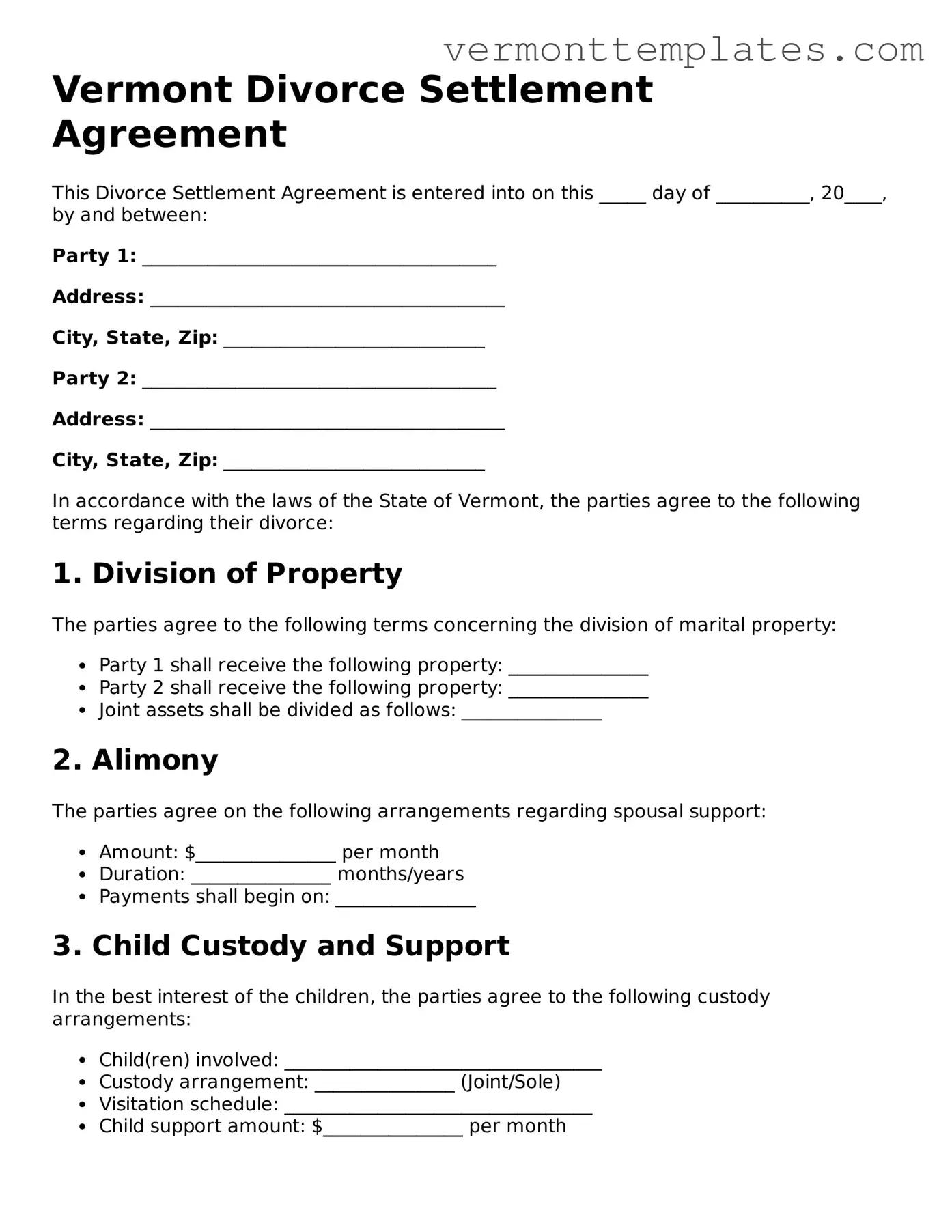Vermont Divorce Settlement Agreement
This Divorce Settlement Agreement is entered into on this _____ day of __________, 20____, by and between:
Party 1: ______________________________________
Address: ______________________________________
City, State, Zip: ____________________________
Party 2: ______________________________________
Address: ______________________________________
City, State, Zip: ____________________________
In accordance with the laws of the State of Vermont, the parties agree to the following terms regarding their divorce:
1. Division of Property
The parties agree to the following terms concerning the division of marital property:
- Party 1 shall receive the following property: _______________
- Party 2 shall receive the following property: _______________
- Joint assets shall be divided as follows: _______________
2. Alimony
The parties agree on the following arrangements regarding spousal support:
- Amount: $_______________ per month
- Duration: _______________ months/years
- Payments shall begin on: _______________
3. Child Custody and Support
In the best interest of the children, the parties agree to the following custody arrangements:
- Child(ren) involved: __________________________________
- Custody arrangement: _______________ (Joint/Sole)
- Visitation schedule: _________________________________
- Child support amount: $_______________ per month
4. Debt Division
The parties also agree on how to handle their debts:
- Party 1 shall assume the following debts: _______________
- Party 2 shall assume the following debts: _______________
5. Miscellaneous
Additional terms and conditions:
- Dispute resolution process: _________________________
- Amendments to this agreement must be in writing.
- Governing law shall be the laws of the State of Vermont.
This Agreement is intended to be a complete and final statement of the terms of the divorce settlement. Both parties acknowledge that they have entered into this agreement voluntarily and with a full understanding of its terms.
Signatures:
Party 1: ____________________________ Date: _______________
Party 2: ____________________________ Date: _______________
